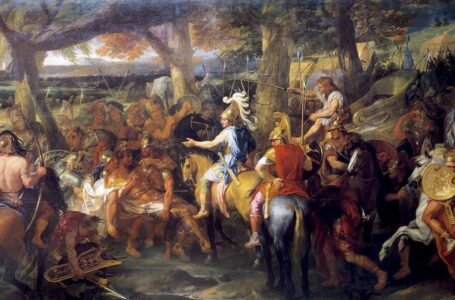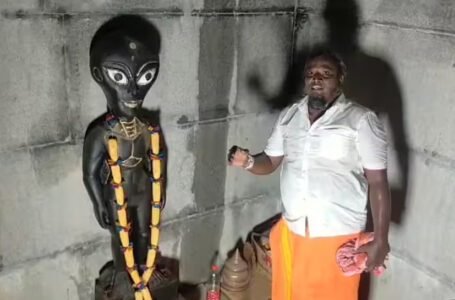Lal Ded: An Unclad Wandering Ascetic Soul of Kashmir
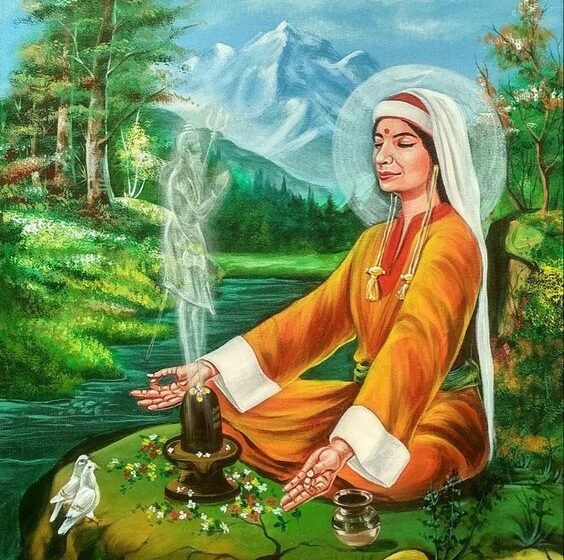
Lal Ded the soul of Kashmir, She is a revered figure found in the hearts of every Kashmiri. Lal Ded was a mystic poet and a saint who belonged to the Kashmiri Shaivism tradition. Kashmiris just can’t help reciting her Vakhs or speech in their conversation. If you ever stumble upon a Kashmiri, just mention Lal Ded and you would witness their eyes scintillating with pride, admiration, and respect. You will realise how precious and prestigious she and her Vakhs, known as Lal Vakhs, are for Kashmiris.

There’s a popular saying in Kashmir that exquisitely encapsulates the sentiment– “Lalla is to Kashmiri what Shakespeare is to English.” This comparison eloquently conveys how deeply Kashmiris cherish Lal Ded and hold profound respect for her timeless and invaluable legacy.
History
Little is known about Lal Ded with great certainty. It’s mostly the legends that are famous about her. It is predicted that Lal Ded was born somewhere in 14th century in Srinagar, Kashmir into a Brahmin family. Her birth name was Lalleshwari but she is more affectionately remembered by other endearing names such as Lalla, Lalla Arifa, Lalla Yogini, Lal Ded and Lalla Yogishwari.
Her poetry tells not only about the political and religious milieu of 14th century Kashmir but also delves deeply into gender roles and the status of women back then. Lal Ded was nothing short of a non-conformist, for she challenged and questioned the religious, social, political, and cultural institutions, norms, structures, and practises through her Vakhs. She was insubordinate and intrepid and that’s why she is venerated and admired by Hindus and Muslims alike.

Lal Ded did receive the basic primary education and was married off at the tender age of 12.
Married Life of Lal Ded:
According to popular legends Lal Ded’s married life was harsh and unhappy. Her in-laws and husband were notoriously cruel. It is said that Lal Ded’s mother-in-law used to serve her rice with stones hidden underneath to make the plate look full. The interesting part here is that in lieu of carping Lal Ded would eat her meal quietly and wash even the stones along with dishes, sparing her ruthless and brutal mother-in-law the trouble of finding new ones.
To escape the harsh and oppressive atmosphere of her home, Lal Ded would go out to fetch water from a nearby river and would not return until evening. She would calmly sit by the river and just watch the pristine water flow freely in complete awe. Sometimes she would spend her time at Lord Shiva’s temple on the other shore of the river. This habit of hers irked her mother-in-law and she began doubting her chastity. Her mother-in-law started accusing her of infidelity.
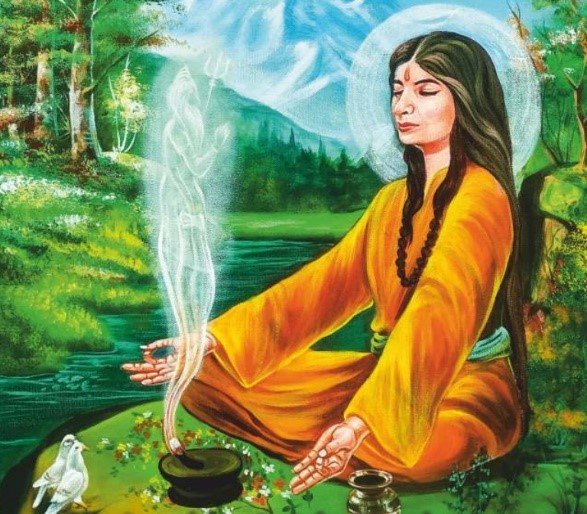
One day when Lalla returned home carrying a pot filled with water, her infuriated husband hurled a stone at the pot, shattering it. Miraculously, the water in the pot remained frozen. It didn’t fall down. When Lalla finished filling all the empty pots, she threw the remaining water outside her home and this led to the formation of a pond known as ‘Lal Trag’. Unfortunately, this pond today however has dried up.
Things came to a head when Lalla left her in-laws and husband at the age of 26. She renounced all the worldly allurements and attachments and embraced the path of spiritual devotion. She became a devoted disciple of the Shaivite saint Siddha Srikanth also known as Sed Boyu. Her teacher taught her everything about Shaivism and emphasized the need to keep one’s inside clean and pure. He underscored the importance of cultivating inner clarity over external distractions. This sentiment beautifully echoes in one of Lal Ded’s Vakhs.

My guru gave a single precept:
turn your gaze from outside to inside
fix it on the hidden self.
I, Lalla, took this to heart
and naked set forth to dance
After being initiated into Shaivism and completing her training, Lal Ded embraced the life of an unclad wandering ascetic. She became a homeless who would just roam here and there without any piece of cloth on her body, reciting Vakhs and dancing ecstatically on the streets. Travelling alone and that also stark naked was a huge matter of shame for a woman. Lal Ded was looked at with disdain and was highly scored by people.
Despite facing widespread condemnation and scorn, Lalla remained undeterred, for she was far from the worldly lust of respect, acceptance, and grief. She didn’t heed anyone because she had already renounced all the worldly conventions. Shiva was her only refuge and she had bestowed her body and soul to him. One of her Vakhs encapsulates this very sentiment eloquently.
To one who dwells inside herself
unbearable taunts cause no grief.
If I am a devotee of Shiva
no dirt can cling to my mirror.

Achievement
- Language Revival
Lal Ded was more than a mystic saint and an ascetic poet. She was an intrepid non-conformist, who questioned the norms, conventions, structures, practises, beliefs of this world at every path of her life. Lalla recited her Vakhs in Kashmiri at a time dominated by Sanskrit. Sanskrit was considered the language of elites and enlightened saints and poets but the rebel Lal Ded boldly challenged this notion by using Kashmiri.
By reviving Kashmiri, Lalla reached tens of thousands of people through her Vakhs, for Kashmiri was the language of the man on the street. Even ordinary people could easily comprehend her Vakhs and that is why Lalleshwari still remains relevant and relatable to all the Kashmiris. Lal Ded breathed new life into Kashmiri by using this language for reciting her Vakhs. This is only due to the revival of Kashmiri language that her teachings still resonate deeply with Kashmiris.
- Literary Contribution
Lalla’s Vakhs were ahead of her time. Her Vakhs can touch the souls of even modern readers. Lal Vakhs are so pertinent till date that while reading it not once will you feel that it was said by someone who lived back in 14th century. Lal Vakhs are considered masterpieces of Kashmiri literature. They explore the themes of love, inner purity, and the path to spiritual liberation in a lucid yet profound manner.
Lalla often used first person pronoun in her Vakhs, addressing herself using her sobriquets like ‘I, Lalli’, ‘I, Lal’ or ‘I, Lalla.’ Her Vakhs are a testament of her staunch devotion towards Lord Shiva.
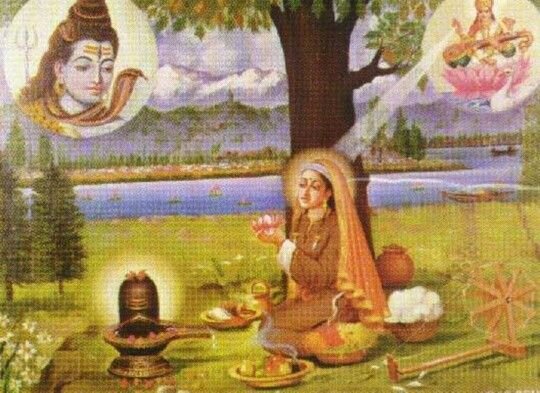
I, Lalla, entered
the gate of the mind’s garden and saw
Siva united with Sakti.
I was immersed in the lake of undying bliss. Here, in this lifetime,
I’ve been unchained from the wheel
of birth and death.
What can the world do to me?
Due to their profound impact, Lal Vakhs have been translated widely into myriads of languages including English such as:
- Women in Praise of the Sacred by Jane Hirshfield
- Naked Song: Lalla by Coleman Barks
- Lalla Vakyani by George Grierson
- Looking Within: Life Lessons from Lal Ded by Shonaleeka Kaul
- Re-shaping & Influencing Shaivism
One of the notable contributions or achievements of Lal Ded is in re-shaping and influencing Shaivism. She re-shaped Shaivism by composing her Vakhs in Kashmiri – the vernacular language of the common people. This choice propagated her teachings to the man on the street, fostering a deeper understanding about Shaivism.

Besides, Lal Ded also enriched Shaivism through her impactful and insightful Vakhs which have left an indelible mark on Shaivite philosophy.
- Lal Ded’s Contribution to Sufism
The first written record of Lal Ded dates back to 1587 in the hagiographical work ‘Tadhkirat ul-Arifin’ by the esteemed Sufi saint Mulla Ali Raina. It is believed that he drew profound inspiration from Lal Ded’s life and teachings.
- Iconoclastic Life
Lalleshwari courageously defied societal norms at every walk of her life. Her Vakhs are a living testament of her iconoclastic spirit. Some of her celebrated Vakhs challenging and questioning prevalent religious practises are:
The idol is but stone
The Temple is but stone,
From top to bottom, all is but stone
Whom will you worship, O stubborn Pandit?
In this Vakh, Lal Ded very boldly challenges the notion that God is found in materials like idols or temples. She emphasizes that God cannot be confined to these materials and one needs self-introspection and deeper understanding of spiritual devotion for true communion with God.
It covers your shame,
Saves you from cold,
Its food and drink, mere water and grass
Who counselled you, O Brahmin,
To slaughter a living sheep as a sacrifice
Unto a lifeless stone?
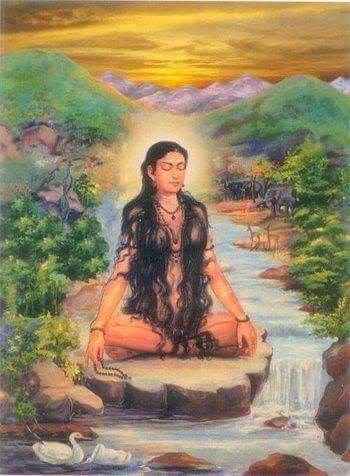
In this poignant Vakh, Lal Ded again fearlessly challenges the ritual of animal sacrifice offered to lifeless idols. She underscores the irony of seeking blessings from the divine God by committing the crime of killing one of the innocent creatures of God. She firmly questions who authorized such actions.
Legacy
According to popular legends, Lal Ded left this materialistic world at the age of fifty. It is recounted that she entered a large earthen pot and covered herself with another large pot atop her head. When she did not re-emerge, people went to have a look inside the pot and found it vacant. Lal Ded had disappeared for good!
Lal Ded vanished but left a profound and enduring legacy behind that continues to inspire future posterities. Lal Ded was not just a saint, a poetess, an iconoclast, a rebel, a feminist, a devotee of Lord Shiva, a Shaivite, she is the very soul of Kashmir! She is Lalleshwari, Lalla, Lal Ded, Lalla Arifa, Lalla Yogini, Lalla Yogishwari and a strong unifying force of Kashmir that rules the hearts of lakhs of Kashmiris.
Her influence transcends time and cultural boundaries embodying a symbol of spiritual enlightenment, cultural richness, and profound wisdom.
Let them hurl a thousand curses at me,
pain finds no purchase in my heart.
I belong to Shiva, can a scatter of ashes
ruin a mirror? It gleams.
